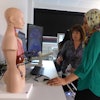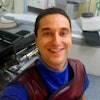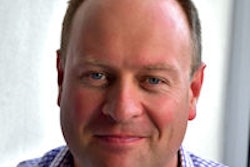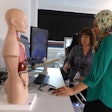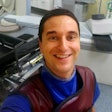
You may think, "A famous radiologist? Who is he kidding? There is no such thing," and to a certain degree, you'd be right. Radiologists are rarely frontline macho types. In the grand scheme of most hospitals, we are bottom of the heap, just above the pathologists. Even the hospital cockroaches will get their own personal parking space before we do.
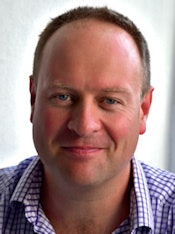 Dr. Paul McCoubrie is a consultant radiologist at Southmead Hospital in Bristol, U.K.
Dr. Paul McCoubrie is a consultant radiologist at Southmead Hospital in Bristol, U.K.Even the great and good of radiology have rarely broken through the surface tension of public consciousness. In medical circles, Sir Peter Kerley got his B-lines remembered but his A and C lines have sunk into obscurity. Dr. Henry Pancoast has an eponymous apical lung tumor in his honor, but out of an estimated 8,000 eponyms, he is a pretty lonely radiological name.
No radiologist has won a Nobel Prize, but our own local-lad-done-good, Dr. Brian Witcombe, won the Ig Nobel prize in 2007 for his pioneering work on the radiology of sword swallowing.
You might also think, "What right-minded radiologist wants fame?" Surely we all chose radiology because we don't have mile-wide egos. We are happy in our role; we don't need to be praised or loved, we know we are in the best medical specialty. Although I've met some right prima donnas, I can't imagine a "rock star" radiologist, reporting whilst wearing cool shades and tight leather trousers.
However, I do suspect that every radiologist would like to contribute something of worth to humanity, or to be fondly thought of for their achievements.
Even if you wanted to be famous, it has become increasingly difficult. Some 20-odd years ago, the average hospital proudly sported five or six radiologists. Now most places have that many just specializing in MRI of the left nostril. As one individual of many, you are just a small cog in a much bigger machine. No matter how much heat, noise, and light you create, you are just a voxel in a low-resolution matrix.
 Strictly optional for a radiologist...
Strictly optional for a radiologist...It isn't nice to hear, but we are dispensable. Departments now run happily without you. Sometimes this is deliberate. A famous radiologist was once asked, "You are so terribly important and busy; who does the work when you aren't there?" to which he responded, "Exactly the same people as when I am here."
I know of very few genuinely ambitious radiologists. They are often worthy individuals who achieve much through hard work, long hours, and exploitation of every ounce of their talent. Although many of them cannot remember the names of their children, are on their third or fourth marriage by the age of 50, and tend to keel over from a heart attack shortly thereafter.
Furthermore, ambition is never far from avarice or narcissism. No one likes the thankfully rare individuals who self-aggrandize; their hubris is noxious. They want power, status, and money that is out of keeping with their abilities and achievements. They may achieve brief infamy, but soon fade from view as they disappear up their own backside.
Most of those in official positions of power are there because they didn't step back quickly enough when volunteers were asked for. Their time in the limelight is spent blinking, smiling nervously with an unmistakable glint of terror in their eyes.
Many of us spend a lot of time managing our departments. It is a crucial task to keep the clinical service running smoothly. But does anyone remember who led a business case to install a particular scanner? The only people guaranteed to read departmental protocols and policies are the people who write them.
Managers vs. leaders
Let's distinguish between managers and leaders. Managers are functional administrators, keeping the ship seaworthy. Leaders are at the helm, steering through choppy waters, unconcerned with a little water lapping over the edge. No one remembers those whose primary concern was stopping the boat from rocking. Bold leaders are remembered. But it is a rare individual who feels comfortable steering a huge rickety vessel down treacherous rapids.
Academic fame is near impossible now. The low-hanging fruit of research have been picked. The days are long gone where a seminal paper could be achieved in a single afternoon with only a bottle of contrast, a long needle, and a nervous-looking student volunteer. The profusion of radiology journals now means that any academic achievement is instantly diluted to homeopathic levels.
However, everyone always remembers a good teacher. They inspire and edify countless individuals over the years. It is easy to achieve: offer to teach and you are pushing at an open door. But I must say that the whole thing about "He who can, does. He who cannot, teaches," is utter rubbish. I've only had great teaching from great radiologists.
Admittedly, we can't all be great, but if you do it with enthusiasm and a smile, you are halfway there. The best bit is that teaching is a valid reason for taking a break from the daily grind. And after a decade or two of plowing the same field, reporting Sisyphean piles of radiographs of mildly osteoarthritic joints, you most definitely need regular breaks.
Dr. Paul McCoubrie is a consultant radiologist at Southmead Hospital in Bristol, U.K.
The comments and observations expressed herein do not necessarily reflect the opinions of AuntMinnieEurope.com, nor should they be construed as an endorsement or admonishment of any particular vendor, analyst, industry consultant, or consulting group.
